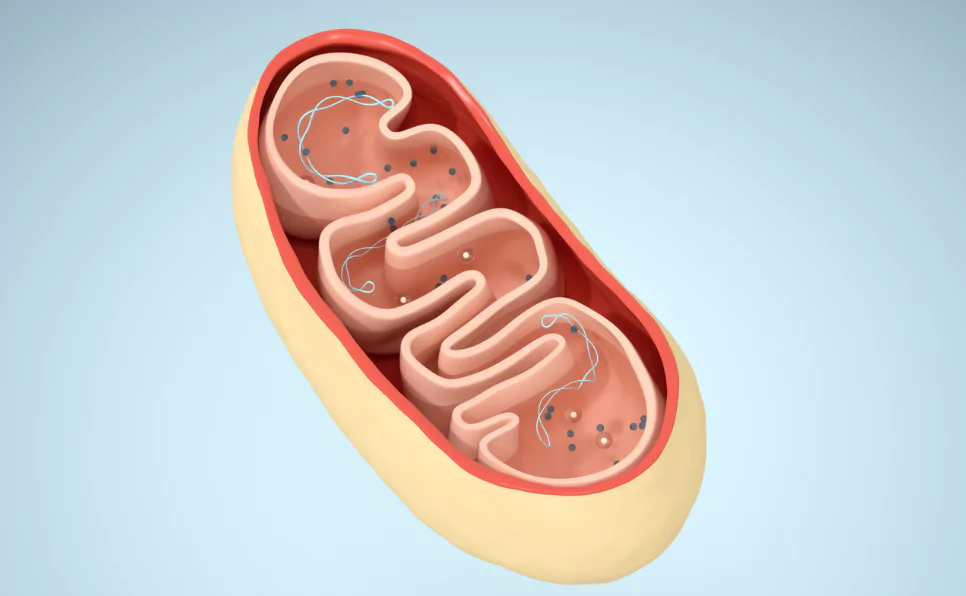DNA, or deoxyribonucleic acid, is the blueprint of life. It contains the instructions needed for an organism to develop, survive, and reproduce.
But not all DNA is stored in the same place or works in the same way.
There are two main types of DNA in our cells: mitochondrial DNA (mtDNA) and nuclear DNA (nDNA).
While nDNA resides in the cell’s nucleus and comes from both parents, mtDNA is found in the mitochondria and is inherited only from the mother.
Understanding the differences between these two types of DNA is crucial, especially in the context of genetic disorders.
Many diseases are linked to mutations in mtDNA, affecting how cells produce energy.
This knowledge isn’t just academic; it directly impacts the lives of those with mitochondrial diseases, influencing diagnosis, treatment, and genetic counselling.
Key Takeaways
- mtDNA is inherited only from the mother, offering a unique window into maternal ancestry.
- Its high mutation rate is a boon for evolutionary studies but also a challenge for genetic health.
- MtDNA mutations can lead to a range of diseases, but research is paving the way for new treatments.
Understanding DNA: The Basics
Before diving into the specifics, let’s clarify what DNA is.
DNA is like a set of detailed instructions for building and maintaining an organism. It’s made up of four chemical bases: adenine (A), cytosine (C), guanine (G), and thymine (T).
The sequence of these bases determines the information available for building and maintaining an organism, similar to how letters of the alphabet appear in a certain order to form words and sentences.
DNA is involved in making proteins, which are the building blocks of the body and critical for everything from the structure of your cells to how they function. Every cell has DNA, and every time a cell divides, it must copy its DNA so the new cells have the same instructions as the original.
Nuclear DNA (nDNA)
Nuclear DNA resides in the nucleus, a small, enclosed compartment within the cell. It’s structured into chromosomes, of which humans have 23 pairs, totaling 46. Two of them are sex chromosomes, XX in females and XY in males.
One set of 23 chromosomes is inherited from the mother, and the other set from the father.
This DNA contains most of the genetic information used to make up a human being, including traits inherited from both parents and instructions for making proteins necessary for the body’s functioning.
This DNA dictates everything from eye color to risk for certain diseases. Its role in inheritance is also key; it’s the reason you might have your father’s eyes or your mother’s smile. Most genetic disorders can be linked to mutations in nDNA, leading to a wide range of health issues.
Mitochondrial DNA (mtDNA)
Mitochondrial DNA, on the other hand, is a bit of an oddball in the genetic world.
It’s found in the mitochondria, often called the powerhouse of the cell.
Mitochondrial DNA Structure and Function
Unlike the familiar double-helix structure of nuclear DNA (nDNA) found in the cell nucleus, mtDNA is circular and much smaller.
This circular nature is a throwback to mtDNA’s bacterial ancestors, reflecting mitochondria’s evolutionary origins as symbiotic bacteria.
One of the most striking differences between mtDNA and nDNA is in their size and the information they carry.
Human mtDNA consists of about 16,569 base pairs, encoding just 37 genes.
In contrast, nDNA contains over 3 billion base pairs and roughly 20,000-25,000 genes, encoding the vast majority of the proteins the body needs.
These mitochondrial genes are vital, however, as they are directly involved in the production of proteins necessary for the mitochondria’s primary function: energy production through oxidative phosphorylation.
This process converts oxygen and nutrients into adenosine triphosphate (ATP), the energy currency of the cell.
The 13 proteins encoded by mtDNA are essential components of the respiratory chain complexes, which drive the production of ATP.
Without these proteins, the cell would be unable to efficiently convert food into usable energy, leading to the symptoms seen in mitochondrial diseases.
Besides these proteins, mtDNA also encodes 22 transfer RNAs (tRNAs) and 2 ribosomal RNAs (rRNAs), which are necessary for the protein synthesis within the mitochondria itself.
This tight integration of mtDNA into cellular energy production highlights its importance to our overall health and vitality.
Despite its small size, mtDNA is a crucial player in the cell’s ability to generate energy, respond to metabolic demands, and support the function of organs with high energy needs such as the brain, heart, and muscles.
Maternal Inheritance
Unlike the DNA in a cell’s nucleus (nDNA), which comes from both parents, mtDNA is inherited exclusively from the mother.
It’s passed down exclusively from mothers to their children, both sons and daughters, but only daughters can pass it on.
This means that your mtDNA is a direct link to your maternal lineage, tracing back through generations of mothers.
It’s like a genetic breadcrumb trail that leads back through your ancestry, providing insights into maternal ancestry that other DNA can’t offer.
However, there are exceptions and anomalies in mitochondrial inheritance.
For instance, rare cases have been reported where mtDNA seemed to be inherited from the father, challenging the long-standing belief of strict maternal inheritance.
These exceptions are incredibly rare but important for scientists to understand the full complexity of genetic inheritance.
The High Mutation Rate of mtDNA
Mitochondrial DNA mutates at a faster rate than nuclear DNA because it does not have a robust replication and repair system and nDNA.
This high mutation rate is a double-edged sword.
On one hand, it helps researchers study human evolution and migration patterns, as these mutations accumulate over generations and can indicate different lineages and populations.
On the other hand, mutations in mtDNA can lead to a range of genetic disorders.
Factors like oxidative stress and the mtDNA replication process contribute to its high mutation rate.
Because mitochondria are the powerhouses of the cell, generating energy through processes that can release harmful byproducts, they are particularly vulnerable to damage that can lead to mutations.
These mutations are not just tiny errors in the genetic code; they can have serious implications for our health.
Mitochondrial diseases, caused by mutations in mtDNA, can affect the body’s energy production, leading to symptoms ranging from muscle weakness to heart disease.
Mitochondrial DNA in Health and Disease
When mtDNA mutations occur, they can disrupt energy production, leading to a spectrum of mitochondrial diseases.
These diseases can be tricky to diagnose because they affect each person differently and can involve almost any part of the body, including the muscles, brain, heart, and liver.
Symptoms can range from mild to severe and may include muscle weakness, neurological problems, heart disease, and diabetes.
In some cases, mitochondrial diseases can occur due to mutations in nuclear DNA that affect mitochondrial function.
Since mitochondria are the powerhouses of our cells, responsible for producing over 90% of the energy our bodies need to sustain life, any disruption in their function can have far-reaching consequences.
A single cell can contain hundreds to thousands of mitochondria, each with its own set of mtDNA. This abundance and multiplicity allow the cell to meet its energy demands efficiently, especially in high-energy-requiring tissues like the heart, brain, and muscles.
The mtDNA within these numerous mitochondria can be homogeneous (all mtDNA copies being identical) or heterogeneous (different mtDNA copies coexisting within the same cell), a condition known as heteroplasmy.
This heterogeneity can influence the cell’s functionality and its susceptibility to diseases.
Heteroplasmy levels can vary between cells and tissues, affecting the severity and manifestation of mitochondrial diseases.
The balance between healthy and mutated mtDNA can determine the cellular impact of mtDNA mutations, influencing energy production and overall cell health.
Here are a few specific mitochondrial diseases to understand their diversity and impact.
Leber’s Hereditary Optic Neuropathy (LHON)
LHON is a prime example of a mitochondrial disease that specifically affects the optic nerves, leading to sudden vision loss in one or both eyes.
This condition typically begins in a person’s teens or twenties and is more common in males.
The vision loss is often painless and can be severe.
LHON is linked to mutations in mtDNA that impair the mitochondria’s ability to produce energy, particularly affecting cells in the optic nerves.
There’s currently no cure, but some treatments aim to support visual function and slow the progression of vision loss.
Mitochondrial Myopathy
Mitochondrial myopathy encompasses a range of disorders characterized by muscle weakness, exercise intolerance, and fatigue.
These symptoms result from mutations affecting the mitochondria’s ability to fuel muscle cells.
People with mitochondrial myopathy may also experience droopy eyelids, difficulty swallowing, and respiratory issues.
Diagnosis often involves muscle biopsies, which can show ragged-red fibers under the microscope, a hallmark of the disease, as well as genetic testing to identify specific mutations.
MELAS Syndrome
MELAS (Mitochondrial Encephalopathy, Lactic Acidosis, and Stroke-like episodes) syndrome is another mitochondrial disorder that affects many parts of the body, particularly the brain and nervous system.
Symptoms can include muscle weakness and pain, recurrent headaches, loss of appetite, vomiting, and stroke-like episodes that can lead to seizures, vision problems, and cognitive decline.
MELAS syndrome is typically caused by mutations in the mtDNA and can manifest in childhood or adolescence.
Treatment focuses on managing symptoms and supporting affected individuals through physical therapy, medications, and dietary adjustments.
Kearns-Sayre Syndrome (KSS)
KSS is a rare mitochondrial disorder that usually begins before the age of 20.
It is characterized by progressive paralysis of certain eye muscles (chronic progressive external ophthalmoplegia), pigmentary retinopathy (a disorder that affects retinal cells and can lead to vision loss), and heart block (a problem with the electrical signals in the heart).
Other symptoms may include hearing loss, muscle weakness, and ataxia (a lack of muscle coordination).
KSS is associated with large-scale deletions of mtDNA.
Management of KSS involves a multidisciplinary approach to address the various symptoms, including pacemaker installation for heart block, eyelid surgery for droopy eyelids, and supportive therapies for muscle weakness.
Diagnosing Mitochondrial Diseases
Diagnosing mitochondrial diseases can be challenging due to their diverse symptoms and their overlap with other disorders.
A combination of genetic testing and clinical examination is crucial for an accurate diagnosis.
Muscle biopsies are often employed to look for classic signs of mitochondrial dysfunction, such as ragged-red fibers.
Other diagnostic tools may include MRI or CT scans of the brain, electrocardiogram (EKG) for heart rhythm abnormalities, and blood tests to detect elevated lactate levels, which can indicate impaired energy production.
While there’s no cure for many of these conditions, ongoing research into mitochondrial function and genetics holds promise for future therapies aimed at enhancing mitochondrial performance or correcting the underlying genetic mutations.
The Potential of Mitochondrial DNA in Medical Research
Recent advances in our understanding of mtDNA have opened new doors in medical research, offering hope for treatments that could one day mitigate or even cure mitochondrial diseases.
For example, techniques like mitochondrial replacement therapy (MRT) are being explored as potential ways to prevent the transmission of mitochondrial diseases from mother to child.
The future of treating mitochondrial diseases looks promising, with ongoing research focused on gene therapy, novel drug treatments, and even the use of stem cells to repair or replace damaged mitochondria.
As we learn more about mtDNA and its functions, we’re finding more ways to target these diseases at their genetic roots.
Final Thoughts
Mitochondrial DNA, with its unique features and critical role in our cells, is at the heart of some of the most exciting research in genetics and medicine today.
As we continue to uncover the mysteries of mtDNA, we move closer to understanding not just our genetic past, but also how to better treat and prevent the diseases that can arise when mitochondrial function goes awry.
The journey to unravel the secrets of mtDNA and turn those discoveries into treatments is long and complex, but it holds great promise for the future of medicine.
FAQs
Can mitochondrial DNA mutations be prevented?
Currently, there’s no sure way to prevent mitochondrial DNA mutations due to their occurrence either spontaneously or inherited maternally. Research into lifestyle factors and medical interventions continues, aiming to understand how to reduce the risk or impact of these mutations.
What are the implications of mitochondrial DNA mutations for genetic disorders?
Mutations in mitochondrial DNA can disrupt cellular energy production, leading to a range of disorders known as mitochondrial diseases. These can affect multiple systems, often with severe outcomes, highlighting the crucial role of mtDNA in cellular health and function.
How are mitochondrial diseases diagnosed and treated?
Diagnosis of mitochondrial diseases involves genetic testing, clinical examinations, and sometimes muscle biopsies. Treatment focuses on managing symptoms and may include supportive therapies, dietary changes, and, in some cases, experimental approaches like gene therapy.
What is the significance of mitochondrial DNA in evolutionary studies?
Mitochondrial DNA plays a key role in evolutionary studies due to its high mutation rate and maternal inheritance pattern. It helps scientists trace maternal lineage, understand human migration patterns, and study the evolutionary relationships between species.
For Further Reading
- Inheritance of mitochondrial DNA in humans: implications for rare and common diseases – PubMed
- The fate of damaged mitochondrial DNA in the cell – PubMed
- Quality matters: how does mitochondrial network dynamics and quality control impact on mtDNA integrity? – Philosophical Transactions of the Royal Society B: Biological Sciences
- The fate of damaged mitochondrial DNA in the cell – Biochimica et Biophysica Acta (BBA) – Molecular Cell Research
- Degradation of paternal mitochondria via mitophagy – Biochimica et Biophysica Acta (BBA) – General Subjects
- GWAS and ExWAS of blood mitochondrial DNA copy number identifies 71 loci and highlights a potential causal role in dementia – eLife
- Biparental Inheritance of Mitochondrial DNA in Humans – Proceedings of the National Academy of Sciences of the United States of America

Dr. Sumeet is a seasoned geneticist turned wellness educator and successful financial blogger. GenesWellness.com, leverages his rich academic background and passion for sharing knowledge online to demystify the role of genetics in wellness. His work is globally published and he is quoted on top health platforms like Medical News Today, Healthline, MDLinx, Verywell Mind, NCOA, and more. Using his unique mix of genetics expertise and digital fluency, Dr. Sumeet inspires readers toward healthier, more informed lifestyles.





